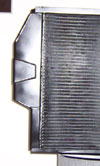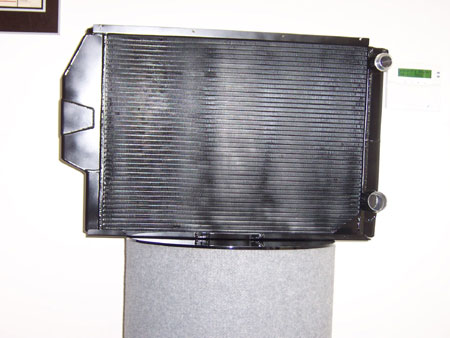Thermal dispersion coatings
 In the recent coatings Focus article in Race Engine Technology (Issue 47, June/July 2010), there was brief mention of thermal dispersion coatings. The aim of these coatings is to eliminate surface 'hot spots' on components and thereby equalise the temperature. Their most common use is on cooling system components, although one supplier we spoke to said one of his customers found success using the coating on aluminium connecting rods, making them less prone to failure.
In the recent coatings Focus article in Race Engine Technology (Issue 47, June/July 2010), there was brief mention of thermal dispersion coatings. The aim of these coatings is to eliminate surface 'hot spots' on components and thereby equalise the temperature. Their most common use is on cooling system components, although one supplier we spoke to said one of his customers found success using the coating on aluminium connecting rods, making them less prone to failure.
In terms of the eliminating surface hot spots, there are obvious advantages with being able to do this. There are many materials used in or around a race engine that experience a significant drop in mechanical and fatigue properties with increasing temperature. If we can achieve a better temperature distribution over the surface, we could avoid there being a premature failure at the hot spot.
Any steel with a low tempering temperature is an example of a material where a local hot spot could start serious damage. Some tool steels and most carburised steels temper below 200 C (392 F). Many of the aluminium alloys commonly used in race engines are aged in the 130-200 C (266-392 F) temperature range, so these may also benefit from the mitigation of local areas of high surface temperature.
It is on cooling systems, however, that these thermal dispersion coatings are most often used. In the case of the major elements of a cooling system, such as a water radiator, oil cooler or charge-temperature cooler (intercooler), there are efficiency gains to be made from having a more even distribution of cooling across the whole area of the cooler.
The net effect for a given area of cooler is that the maximum temperature in the system is lowered. In the case of the water system, a lower temperature can mean that the engine produces more power.
There can be unintended consequences of lowering water temperature in an engine, especially in bespoke engines where the piston-to-cylinder clearances may be tight. But we can use this increased cooling capacity to the benefit of the car and to make lap-time improvements.

In one case of a team using this coating, they recorded a significant water temperature decrease - 10-12 F for a water temperature of about 230F. The team subsequently blocked the face of the radiator so that the cooling airflow was reduced, and the previous water temperature was restored. This has an aerodynamic benefit that improves lap time.
The full re-optimisation of the system would include reducing the radiator area (with attendant reduction of mass) and smaller cooling ducts. The requirement for smaller sidepods on a single-seat car would be gladly welcomed by the aero department!
These coatings can also be used to good effect on oil pans (sumps).
One point to consider is the requirement for the coating to be cured at a temperature of 150 C (300 F). This may mean that the ageing or tempering temperatures of some materials are exceeded.
Fig. 1 - This water radiator has been treated with a thermal dispersion coating (Courtesy of HM Elliott)
Written by Wayne Ward